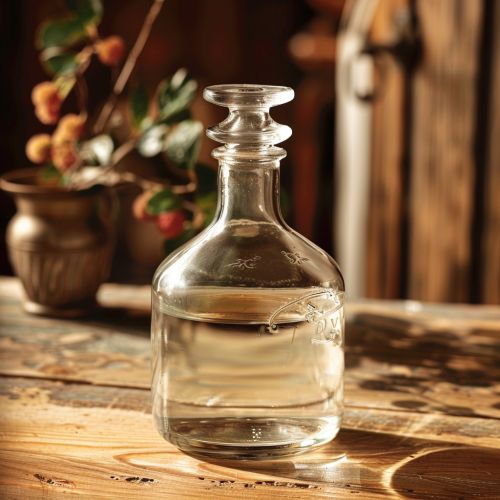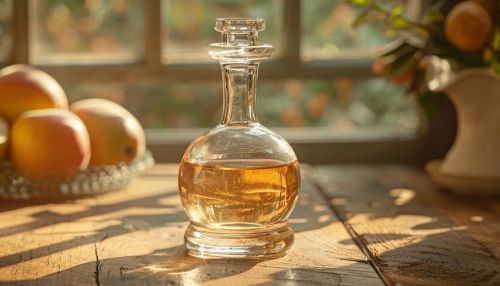What is Eau de Vie?
Definition
Eau de Vie is a clear, colorless fruit brandy that is produced by means of fermentation and double distillation. The fruit flavor is typically very light. In English, the term translates to "water of life". The term can refer to fruit brandy, fruit liqueur, or even fruit eau-de-vie. Fruit brandies are derived from a variety of fruits, while fruit liqueurs are typically sweetened spirits with fruit flavors, and fruit eau-de-vie is a clear, colorless fruit brandy.


Production
The production of Eau de Vie involves several steps. The first step is the selection and preparation of the fruit. The fruit is then fermented into a pulp known as a mash. The mash is then distilled to produce a raw spirit. This raw spirit is then aged in glass or stainless steel containers for several months to several years. The final step is the blending and bottling of the Eau de Vie.
Types
There are several types of Eau de Vie, each made from different types of fruit. Some of the most common types include:
- Apple Eau de Vie: Made from apples, this type of Eau de Vie is often referred to as apple brandy or applejack.
- Pear Eau de Vie: Made from pears, this type of Eau de Vie is often referred to as pear brandy or poire William.
- Cherry Eau de Vie: Made from cherries, this type of Eau de Vie is often referred to as cherry brandy or kirsch.
- Plum Eau de Vie: Made from plums, this type of Eau de Vie is often referred to as plum brandy or slivovitz.
- Peach Eau de Vie: Made from peaches, this type of Eau de Vie is often referred to as peach brandy or schnapps.
Uses
Eau de Vie is often consumed neat, but it can also be used in cocktails, cooking, and baking. In cocktails, it can add a subtle fruit flavor and a kick of alcohol. In cooking and baking, it can be used to enhance the flavor of certain dishes and desserts.
History
The history of Eau de Vie is closely tied to the history of distillation. The process of distillation was first developed by ancient civilizations, but it was not until the Middle Ages that the process was refined and used to produce spirits like Eau de Vie. The production of Eau de Vie spread throughout Europe during the Middle Ages, and it has remained a popular spirit in many European countries, especially France and Germany.
